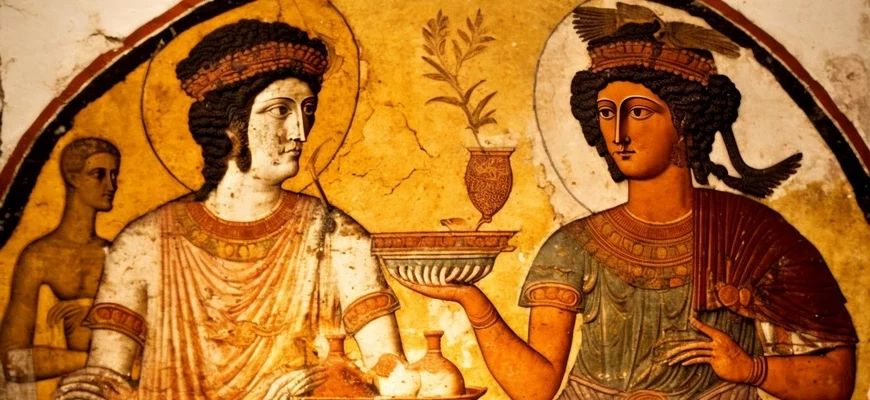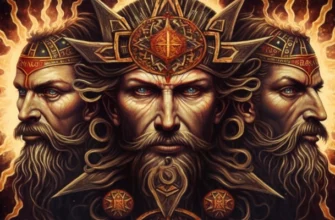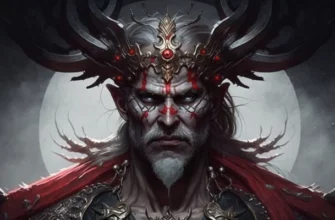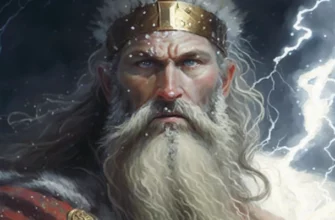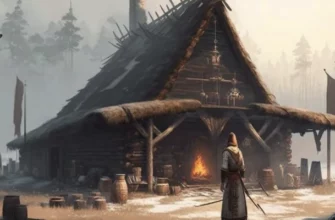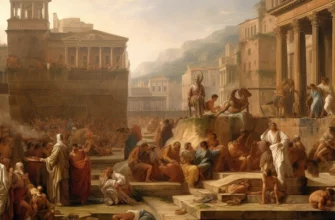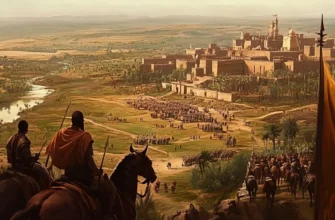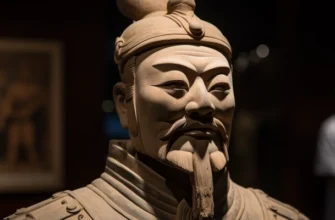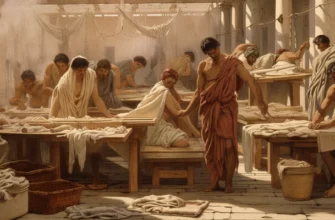The Etruscans were an ancient civilization that flourished in Italy at the beginning of the first millennium BC. There is some evidence that the Etruscans may be related to other Indo-European peoples, such as the Greeks and Romans, but their linguistic origins remain a mystery.
Some researchers believe that the Etruscan language has much in common with the Old Russian language, which raises the question of a possible kinship between the Etruscans and the Slavs. However, many other researchers consider this theory to be unproven and implausible.
In order to investigate the possible relationship between the Etruscans and the Slavs, comprehensive linguistic and archaeological research is needed. It is also important to consider the historical context and cultural characteristics of these two peoples.
In any case, research may help to better understand the origins of the Etruscans and their role in Italian history, and may also bring new discoveries about the origins of the Slavs and their cultural heritage.
Historical context: Etruscan culture and the Slavic people
The Etruscans were a people who lived in what is now Italy, from the Tyrrhenian Sea in the west to the Apennine Mountains in the east. They appeared in these lands around 900 BC and became one of the most famous peoples of ancient Italy. Etruscan culture was quite advanced and differed from other cultures of the ancient world. They are known for their luxurious art, developed skills in metallurgy, pottery, architecture, and other fields.
As for the Slavic people, their history spans many centuries and begins with the ancient Scythian and Sarmatian tribes that inhabited the territories of modern Ukraine and neighboring countries. The Slavs were known for their agricultural culture, skill in pottery and textile production, and also possessed advanced knowledge in the fields of medicine and astronomy. In the middle of the first millennium AD, Slavic tribes began to spread westward and southward, inhabiting various parts of Europe.
Although the Etruscans and Slavs never met in history, their cultures have differences and similarities revealed in archaeological and other studies. They were both known for their skills in various fields, including arts and crafts, and had developed cities that were distinguished by their architectural style and infrastructure. Also, both peoples were in some way connected with religion and mythology, which reflected their views on the world and nature.
However, despite their similarities, Etruscan culture and the Slavic people developed in different historical eras and in different geographical areas, so it is not possible to speak of direct interaction between them.
In general, both peoples played an important role in the development of world history and culture, leaving behind many valuable artifacts and legacies that are still being studied and researched today.
Common features of the Etruscans and Slavs
There are several common features that can be noted in the cultures of the Etruscans and Slavs:
Religion and mythology: Both peoples had complex belief systems and mythology that reflected their views of the world and nature. In both cultures, religion played an important role in everyday life and was associated with rituals and celebrations.
Art and craftsmanship: The Etruscans and Slavs had a developed culture of art and craftsmanship, including the production of exquisite jewelry, metal objects, pottery, and textiles. Both peoples possessed unique techniques and styles that distinguished them from other ancient cultures.
Developed cities: Both the Etruscans and Slavs had developed cities that were distinguished by their architectural style and infrastructure. The cities of both cultures had theaters, fortresses, and large city squares.
Luxurious lifestyle: Both peoples were famous for their luxurious lifestyle, which reflected their social status and wealth. The Etruscans and Slavs had a developed concept of social hierarchy, where the elites owned large estates and jewelry.
Although Etruscan and Slavic cultures developed in different historical periods and geographical areas, there are common features that reflect their similarities in certain aspects of life and culture.
Analysis of the hypothesis about possible connections between Etruscan culture and the Slavic people
The hypothesis about possible connections between Etruscan culture and the Slavic people has its supporters and opponents. At the moment, there is no unanimous opinion on this issue in scientific circles, as there is insufficient evidence to confirm this hypothesis.
Supporters of this hypothesis point to some similarities in the culture and language of the Etruscans and Slavs. For example, the Etruscan language contains some Slavic elements, which may indicate some contact between the peoples. In addition, the Etruscan language has no clear similarities to the languages of other Mediterranean peoples, which may also indicate some influence from the Slavic peoples.
Opponents of this hypothesis point to many differences between Etruscan culture and the Slavs, which may indicate that these peoples had no direct connections. For example, Etruscan culture had a distinct Eastern heritage, while Slavic culture had a more pronounced Western influence. In addition, there were significant geographical distances and historical periods between the Etruscans and the Slavs, which may indicate a lack of direct influence on each other.
Therefore, at this point, the hypothesis of possible connections between Etruscan culture and the Slavic people does not have unequivocal support in scientific circles. More research and evidence are needed to determine whether there were direct links between these peoples. It is also important to consider that the history and culture of peoples can have complex and indirect links that are not always obvious and direct.
For example, there is a hypothesis that the Etruscans originated from local peoples who existed in the territory of modern Italy before the arrival of other peoples from the East. From this point of view, the Etruscans may have common roots with other peoples, including the Slavs.
In addition, it is necessary to take into account that the history and culture of peoples can have different layers and stages of development. For example, the Slavic people have a long and complex history consisting of different stages and periods. This may lead to some similarities with other cultures at certain stages of development, including Etruscan culture.
In a general context, the hypothesis of possible links between Etruscan culture and the Slavic people remains open to discussion and further research. It is important to consider all possible factors and contexts that may influence the development and evolution of the history and culture of peoples.
